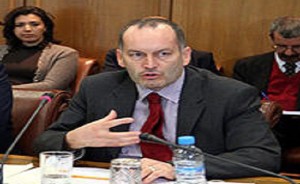Star Africa
by PR Newswire
The Moroccan economy is faring better due to significant progress in implementing economic reforms, but the country should sustain efforts to maintain gains and achieve higher and inclusive growth, the IMF said in its latest annual assessment of the economy and first review of the liquidity line that Morocco obtained from the global lender in 2014.
Speaking to IMF Survey, IMF Mission Chief for Morocco, Jean-François Dauphin, said that commendable progress was made, but the economy still faces significant risks that call for sustained implementation of reforms.
The IMF is supporting the authorities’ economic program through a Precautionary and Liquidity Line, which serves as an insurance policy to protect the economy in case of severe external economic conditions.
IMF Survey: How is the Moroccan economy faring?
Dauphin: Economic imbalances have considerably reduced over the last three years. After significant external shocks hit the economy in 2011-12, the authorities have implemented a package of economic reform policies, supported by an IMF Precautionary and Liquidity Line, to help address economic vulnerabilities. In particular, they achieved a significant reduction in the fiscal deficit and moved ahead with an impressive reform of the subsidy system.
As a result, the current account deficit has also narrowed and foreign exchange reserves have increased. The emergence of new export sectors and the recent decline in international oil prices have also played a role in the rebalancing process.
In November 2014, the authorities adopted a new organic budget law, which—once comments from the constitutional council have been addressed—is expected to strengthen and modernize the budget framework. A new banking law was also adopted, which broadens the regulatory and supervisory role of Morocco’s Central Bank.
Nonetheless, the overall unemployment rate remained high at 9.7 percent at end 2014, with youth unemployment around 20 percent. And, much remains to be done to reduce income, gender and regional inequalities.
IMF Survey: What is your assessment of the country’s economic outlook?
Dauphin: We expect the Moroccan economy to strengthen going forward. In 2015, economic growth is expected to reach about 4½ percent, inflation is projected to remain low (around 1½ percent), while the fiscal deficit continues to narrow. Assuming steadfast implementation of structural reforms, growth could further accelerate and reach the 5-5½ percent range over the medium term.
However, Morocco still faces significant risks. A protracted period of slow growth in Europe—Morocco’s main trading partner — can result in lower exports, foreign direct investment, tourism, and remittances. A renewed spike in energy prices, stemming from geopolitical tensions in the Middle East and/or the Russia-Ukraine standoff, could result in higher oil imports. A surge in global financial market volatility would also negatively impact the economy. Moreover, it will be important to maintain societal buy-in for reforms.
IMF Survey: In July 2014, the IMF approved a second Precautionary and Liquidity Line in an amount equivalent to about $5 billion. What is this arrangement about and why is it right for Morocco?
Dauphin: The Precautionary and Liquidity Line arrangement is designed to meet the potential liquidity needs of member countries with sound economic fundamentals and track record of policy implementation, like Morocco, but with some remaining economic vulnerabilities and risks.
The IMF created the instrument in 2011 to serve as an insurance policy against unfavorable external economic conditions that are beyond the authorities’ control.
This is the second arrangement that Morocco has had with the IMF since the global crisis, to support the authorities’ home-grown economic reform program. The authorities treated the first arrangement as precautionary and did not draw on its financial resources. Similarly, they don’t plan to draw on resources under the second one. The IMF has just completed the first review of the authorities’ program, which remains on track.
IMF Survey: What are the main economic issues that Morocco still needs to deal with?
Dauphin: The Moroccan authorities have made commendable efforts to maintain macroeconomic stability despite the difficult external environment.
But, in light of the above risks, sustained implementation of reforms will be essential to consolidate gains in macroeconomic stability. In addition, there’s still more to be done to foster higher and more inclusive growth by lowering unemployment and poverty incidence, notwithstanding progress made in the last decade.
The fiscal deficit needs to be reduced further to put the public debt firmly on a downward path. And, the pension reform, which has been facing implementation challenges, is becoming increasingly urgent.
Continued reforms to strengthen the competitiveness of the economy through further improving the business climate, fostering greater access to credit for households and small and medium-sized enterprises, improving governance and transparency, and investing in infrastructure and education are crucial. Giving more flexibility to the exchange rate regime would also help the economy better absorb shocks and support the diversification of economic and financial flows. In addition, there is a need to ensure that the functioning of the labor market is conducive to private sector job creation.
The authorities’ reform agenda aims to tackle those challenges. For its part, the IMF continues to support Morocco through policy advice and technical assistance, which, in addition to the liquidity line, aim to help the country achieve economic stability and better living standards.
SOURCE International Monetary Fund (IMF)








